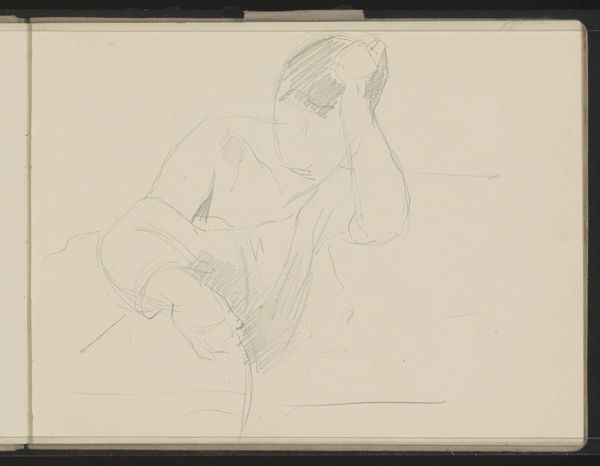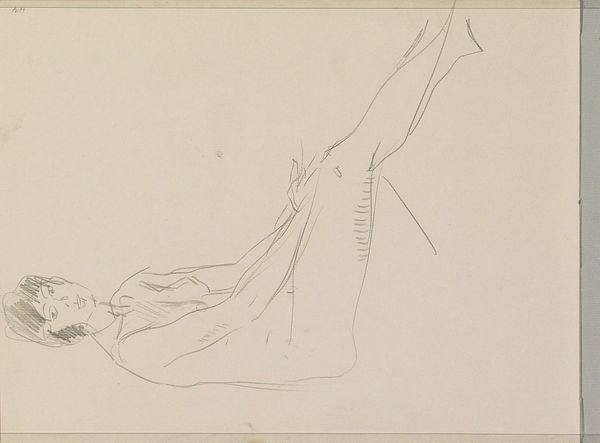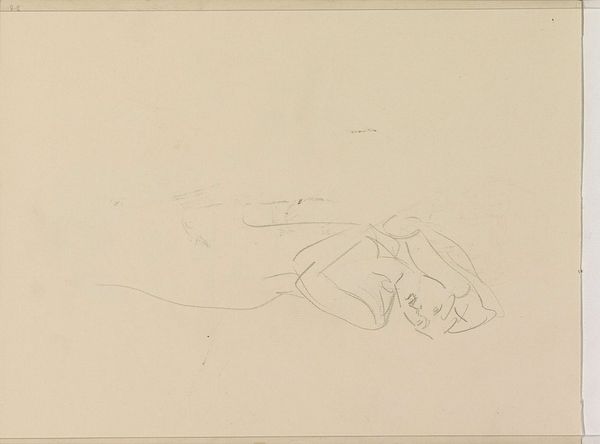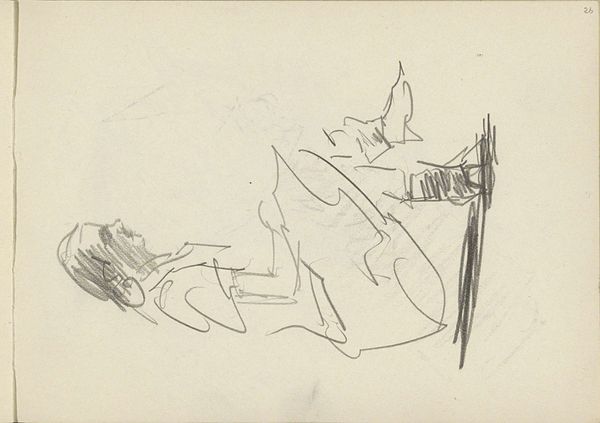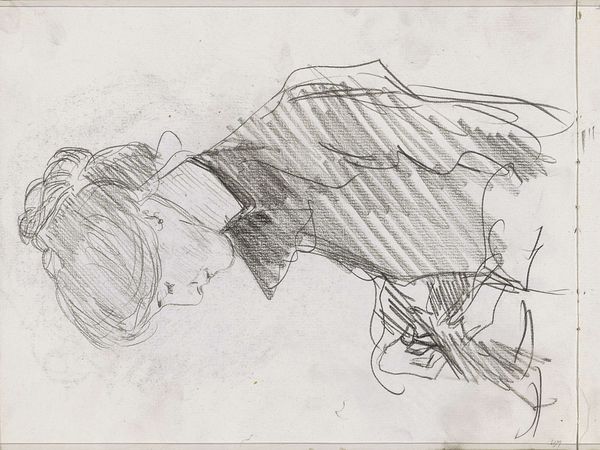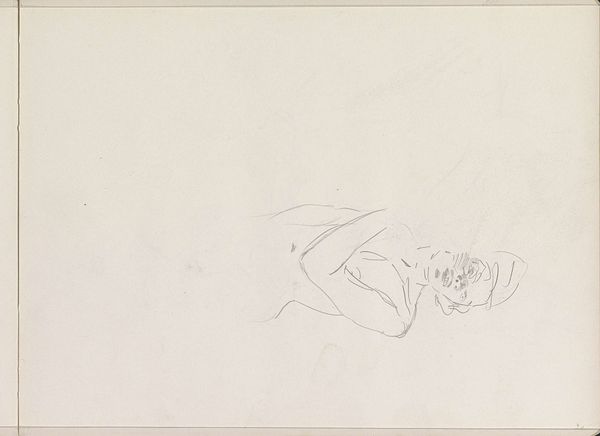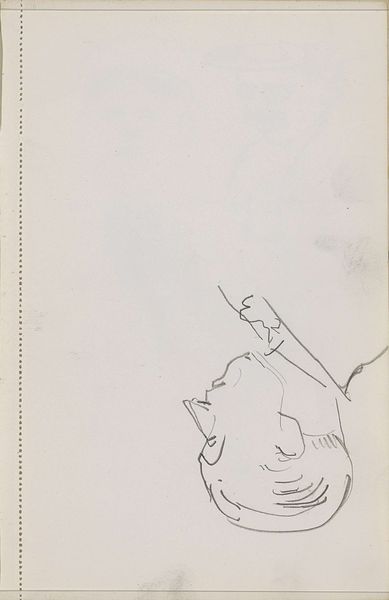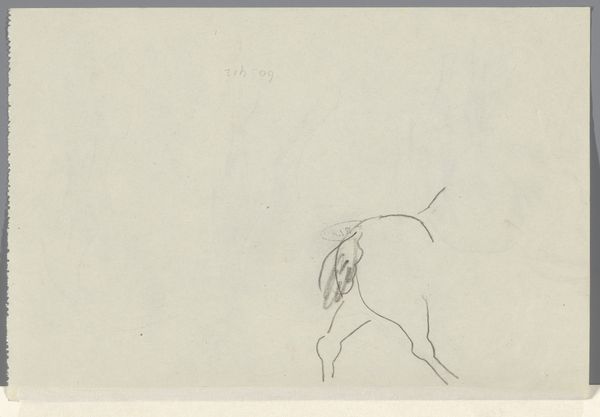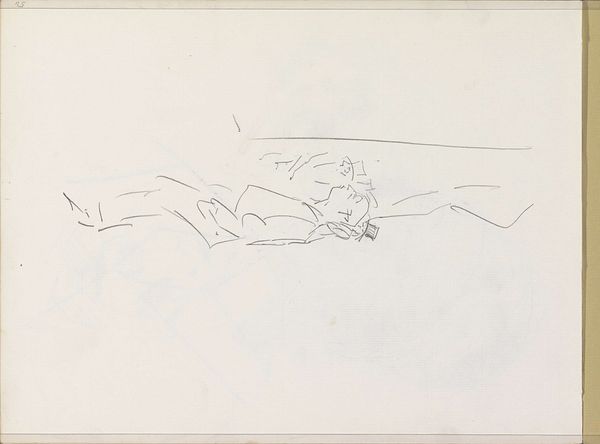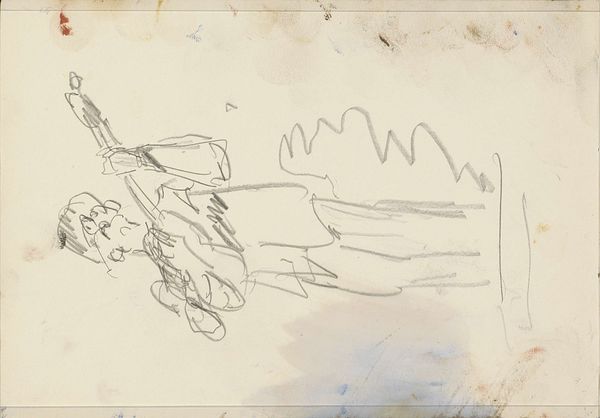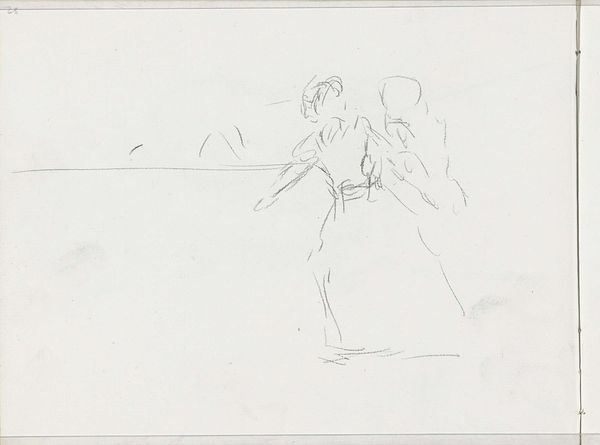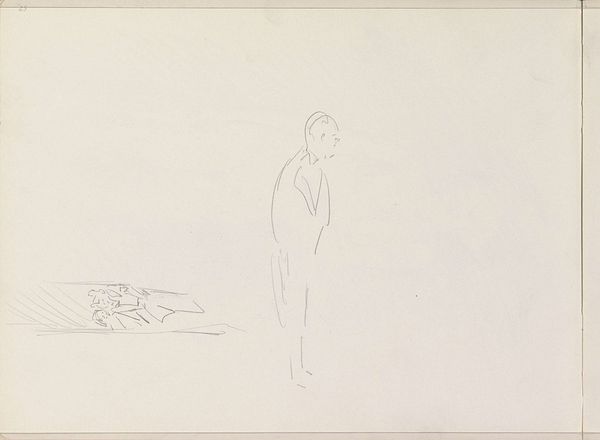
#
imaginative character sketch
#
light pencil work
#
quirky sketch
#
personal sketchbook
#
idea generation sketch
#
character sketch
#
sketchbook drawing
#
fashion sketch
#
sketchbook art
#
initial sketch
Copyright: Rijks Museum: Open Domain
Curator: This unassuming sketch, “Man in uniform, op de rug gezien,” by Isaac Israels, made sometime between 1915 and 1925, is part of the Rijksmuseum’s collection. Editor: It’s stark, isn't it? All those pale tones and thin lines suggest a figure fading into the background, almost like a ghost. It's a strangely vulnerable image despite the uniform. Curator: It’s compelling to think about the symbolism here. Israels was known for depicting modern life. The man's back being turned could represent a deliberate evasion, a refusal to engage with the turbulent societal and political events unfolding around him during and after the First World War. Editor: The turned back definitely contributes to the anonymity. The hat—what kind is it? Is that a busby, perhaps? Or maybe a field cap? Anyway, that uniform shields more than his body; it shrouds his very identity and invites assumptions based on his profession, not his individuality. Notice how he’s alone, solitary, unburdened from visual storytelling apart from his symbolic military garment. Curator: It would have resonated powerfully at a time of enormous upheaval and a rise in nationalism. The public perception of the military man, and Israels’ position concerning those perceptions, make this sketch such a treasure to unpack in today’s society where uniform still make men equal. Editor: Yes, I am getting less ghostly vibe now that you make that connection to current political interpretations of public and private positions and personas. This piece is a fine meditation on identity, service, and sacrifice. Its symbolism speaks across generations. Curator: Indeed, viewing art offers an open portal to explore our history in novel ways. Editor: It shows how a simple pencil sketch can provoke such complex dialogues!
Comments
No comments
Be the first to comment and join the conversation on the ultimate creative platform.
